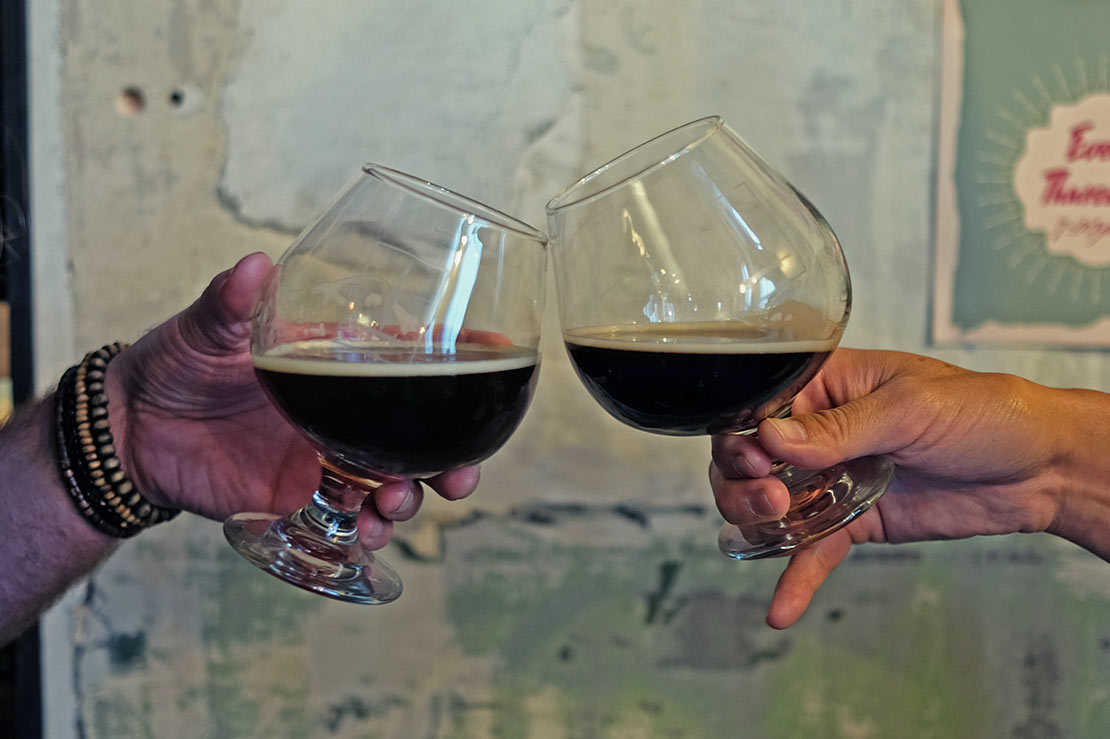The quick answer is: There is not much distinction between porter and stout these days, as recipes developed over the years have blurred the line. “It really depends on what a brewery wants to call it or how it markets the beers,” said John Wei, founder and brewer of Brewlander Singapore.
How has it become this way? We will have to go back to beer history in 18th century England.
Dark beers
Before technology advancement in providing gentler malt kilning, malted barley was roasted with direct fire which resulted in darker malts, hence beers produced at that time were darker in colour.
The pale and golden beers we drink today came from improved kilning methods that produced pale malts. Whilst the “pale ale” is not light in colour by today’s standards, it was back then when compared to porters, milds and ambers which were the more common options.
The origin?
Porter was one of the beer styles created in London and was commonly consumed at that time. “It got its name due to the popularity with street and river porters,” said Wei.
There is a saying that porter style beer was developed by the brewers to replace the mixing of fresh and old beers by English pubs’ barmen. No written records back up this account, but it’s not far off to think the method was more likely designed to save old stale beer than for fashion.
How “stout” became “a stout”?
There were variants of the porter style, with the stronger and darker versions becoming more commonly known as “Stout Porter”. To make sense of this, Wei explained that beers like bitters have variants called “ordinary”, “best” or “extra special” based on their strength; for porters and stouts, that relationship was similar. “Stout” just meant a strong porter and had no particular meaning on its own.
Greg Brown, Lead Brewer of 36 Club Street, Singapore says on the topic,
“Historically, ‘stout’ was an adjective and a classification of the porter style. The difference was chiefly in the amount of water used when brewing.”
The same is referenced in a research done by Ronald Pattinson recorded in his blog post of the brewing recipes by Whitbread for 1805 and 1844. Their Porter, Single Stout, Double Stout and Triple Stout used the same amount of ingredients while the only difference was in the amount of water used in each variant.
At some point, “stout” as a description of the type of porter became a beer style of its own and simply became “a stout”.
What’s the point of having two separate categories then?
“Stout” has been made very popular around the world by the Irish brewery Guinness, which has its influence to even the Far East for over 100 years. “The black stuff” has established the category synonymous with its high alcohol content. That’s what “stout porter” was, a higher alcohol strength porter.
Over the years, as brewers innovate and experiment with ingredients, porters and stouts each have their own sub-styles and the alcohol strength is no longer the gauge to differentiate the two. The sub-styles include some interesting brews, some based on geographical influence and some taking inspiration from food and other beverages.
Porter sub-styles
English Porter (or Brown Porter), American Porter, Baltic Porter, Coffee Porter, Robust Porter, Smoked Porter, Barrel-Aged Porter, Imperial Porter
Stout sub-styles
Irish Stout, Foreign Extra Stout, American, Milk Stout (aka Sweet Stout), Oatmeal Stout, Pastry Stout, Coffee Stout, Barrel-Aged Stout, Imperial Stout, Tropical Stout
That slight distinction only known to brewers
Wei, who started out as a gypsy brewer with his Brewlander label has recently moved to a spanking new brewery in Tuas, Singapore.
“Porters use more brown and/or chocolate malts which gives it a more chocolatey taste, whereas stouts use more roasted barley which gives a pronounced coffee taste”, is the award-winning brewer’s observation on the difference in ingredients used that separate porter and stouts.
That description is not far off from Brown’s, which pinpoint that the use of “black patent or roasted barley” in porters and “roasted unmalted barley” in stout. “This is historically inaccurate, although it was definitely a key factor used by craft and home brewers for many years as a way to classify the styles,” added Brown.
However much distinction we try to draw between porters and stouts, the brews are siblings that give the same pleasure to drinkers, to be savoured and not gulped.
If it gets too complicated, we suggest following what Ronald Pattinson quoted in All About Beer Magazine (2015), “All stouts are types of porter. But not all porters are stouts. Only the stronger ones”.
- T -
